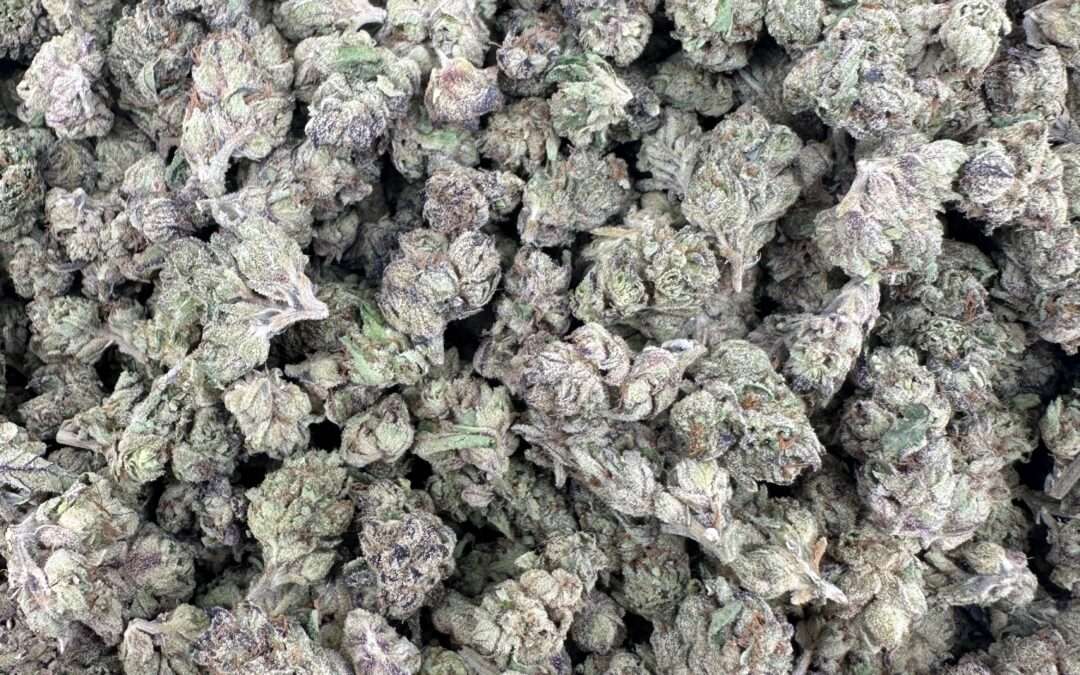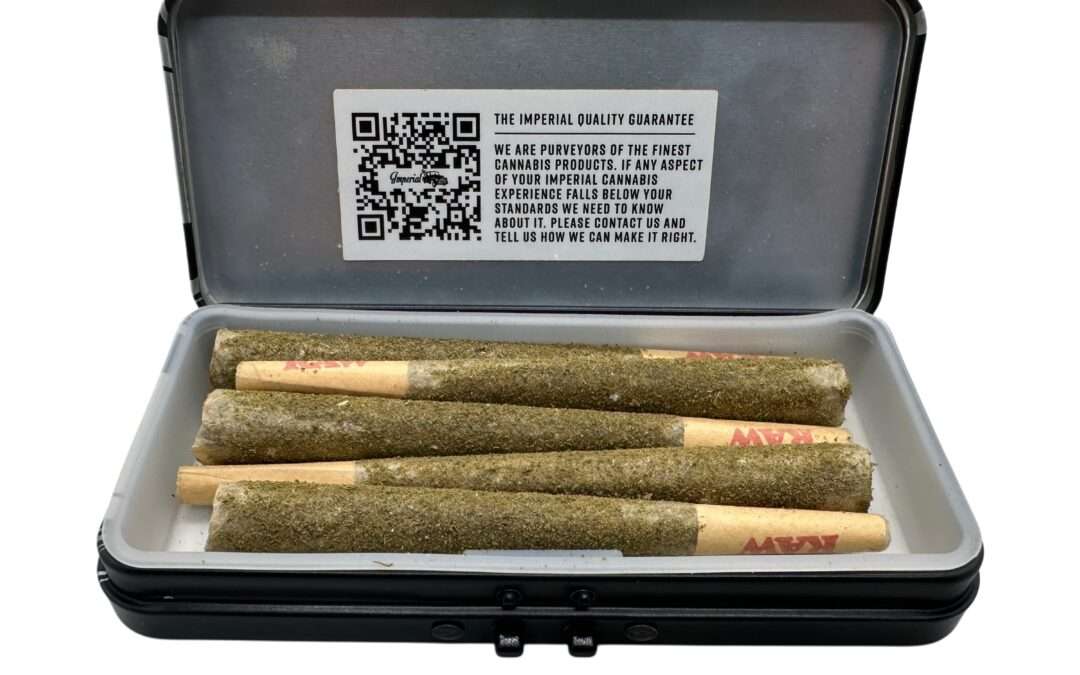Imagine walking down the vibrant, bustling streets of New York City. You can’t help but get lost in the myriad of retail stores, food carts, and attractions—each promising a unique slice of the Big Apple. But, let’s take a step off the main road and into one of NYC’s robust underground economies: the cannabis black market.
It’s a world teetering on a delicate balance between legality and illicit operations; a world where seasoned veterans work alongside new entries, both navigating the constantly shifting landscape. With the recent legalization of recreational cannabis use in New York, this sector is on the brink of unprecedented transformation. With its complex, shadowy past and promising future, New York’s cannabis market offers a fascinating case study for economists, policy makers, and curious observers.
In this article, we will provide you with an in-depth portrayal of NYC’s cannabis black market, its transition into the regulated, legal market and the challenges and victories that come with it. Consider this your front-row ticket to a monumental shift in the city’s socio-economic landscape. Buckle up, for an enlightening journey unravelling the secrets of New York’s green economy is about to unfold.
The Roots of New York City’s Cannabis Black Market
Let’s take a trip down memory lane, shall we? To truly appreciate the transformation of New York’s cannabis market into a legal entity, it’s essential to peer into its clandestine past. New York’s relationship with cannabis dates back to the 1920s when, as part of the Harlem Renaissance, it was widely used in jazz clubs, ushering in a unique cultural edge to the city’s thriving music scene.
However, nationwide crackdowns in the following decades meant that cannabis had to go underground. Prohibition drove the cannabis market into the hands of the black market operators, who saw a lucrative opportunity in the demand for the herb. Strict laws and penalties around cannabis usage didn’t diminish its demand, but instead made it a forbidden fruit, incentivizing illegal transactions.
The 1970s saw a surge in demand, leading to the blossoming of the black market. At its zenith, this underground network interconnected boroughs and neighborhoods, spurring a vibrant, albeit illicit, economy. In addition, there was a cultural shift. Cannabis was no longer just a substance for hedonistic pleasure; it became ingrained in the youth culture and counter-culture. This normalization paved the way towards advocacy for its decriminalization and, eventually, the legalization that we now witness today.
So while it operated in the shadows, the black market did more than just fulfill a demand. It also served a sociopolitical narrative that challenged laws, initiated dialogues, and revolutionized how we perceive cannabis. The transition we see today, from black to legal market, is deeply rooted in the city’s clandestine cannabis history. A history that, while murky, did play a significant role in shaking up the status quo.
Decoding the Structure of NYC’s Cannabis Black Market
Prior to cannabis legalization in New York, the black market was the only avenue most New Yorkers could explore to obtain the product. While it was not exactly a structured organization with clearly defined hierarchies like one might think, this illicit market had its own informal structure and subtle order.
At the base, you had your street-level dealers, the foot soldiers, if you will. Usually they’d be selling directly to the consumers, operating from the backdrop of inconspicuous establishments or moving stealthily through crowds in city parks.
These dealers were typically supplied by distributors who handled larger quantities, receiving their supplies from growers or importers. Some were locally grown, but more often cannabis was smuggled into the city. The ingenious hiding methods and evasive delivery routes were as varied as one could imagine.
At the top, you’d find the key players controlling the operation. They often maintained a low profile, carefully navigating the scene to avoid too much attention while simultaneously ensuring their black enterprise runs smoothly.
The structure of this system was loose, nebulous, and versatile, helping it remain robust despite legal threats and police crackdowns. It’s this gritty resilience of the black market that made the pathway to legalizing cannabis in NYC a tricky terrain to maneuver.
The Rise and Resilience of Underground Cannabis in NYC
Despite the thriving legal cannabis market in New York City, the underground system steadily remains. You may be wondering why this is. The answer lies in deep-rooted networks and resilient practices that have allowed the black market to adapt and evolve, no matter how turbulent the waters they navigate.
These practices, often shrouded in secrecy and pegged with an air of danger, have morphed into more resilient and inventive operations over the years. The adaptability of these networks primarily stems from the fundamental drive to offer a product that has, for a long time, been in high demand.
For example, one significant factor contributing to the black market’s stubborn existence has been their ability to offer tax-free goods. Indeed, avoiding the hefty state and city taxes that are levied on legal cannabis products can be very attractive to consumers. Moreover, individuals with criminal records, often resulting from past cannabis-related charges, can find it challenging to enter the legal market. Hence, the black market offers them an opportunity for livelihood.
However, it’s not all clandestine operations and forbidden transactions. Many of these individuals see themselves as pioneers on the frontline of marijuana liberation, standing tall against what they perceive as an oppressive system. The resilience of the underground cannabis market in NYC is a testament to their persevering spirit.
As the legal market continues to grow and establish its roots, it remains to be seen how this parallel system will withstand the pressure. Will it be pushed further into the shadows, or find a way to coexist? Only time will tell. In the meantime, it’s crucial to keep an eye on this resilient black market as it continues to adapt to the changing landscape of cannabis trade in the Big Apple.
Facing the Challenges: The Rocky Road to Legalization
Let’s be candid here, transitioning from illicit trade to legal enterprise is pretty much like swapping out a roller coaster ride for a paperwork marathon. It’s fraught with complexities and poses its own set of challenges.
The former black market operators grapple not just to adhere to the stringent state regulations but they also struggle to abandon their old practices, reboot their operations and square up against legitimate competition. The very market which was running undercover in the alleys, hidden basements and shadowy corners of the city, is now expected to operate in the broad daylight, under the scrutiny of regulatory bodies. Now, that’s a run through a gauntlet!
Legalization, ironically, has also brewed a new class of black market operators who circumvent the regulatory norms to enjoy higher profits. As a law-abiding consumer, it’s more important than ever for you to differentiate between legal and illegitimate operators.
Moreover, one pervasive challenge faced during this transition has been dealing with the paucity of banking services. Despite marijuana being legal in the state, it remains a controlled substance at the federal level. This discrepancy often discourages banks from offering their services to cannabis businesses.
It’s evident that, while legalization has brought immense opportunities, there have been sizable hurdles to overcome. Change, after all, is seldom easy. As the cannabis market in NYC continues to evolve, we can expect a few more bumps on the path to a fully legalized and regulated market. But rest assured, progress is never a straight line and those involved in this green revolution remain undaunted.
Key Players: The Power Brokers of NYC’s Cannabis Scene
As you delve deeper into New York City’s cannabis scene, you’ll encounter a host of dynamic and influential players. These key players, often known as power brokers, hold significant sway over the direction and development of the cannabis market.
The power brokers come from a variety of backgrounds, spanning from underground operators who have navigated the black market, to advocates and politicians pushing for reform. Economic influencers like investors and entrepreneurs also hold considerable power in shaping this burgeoning market.
Underground Operators: Many of the underground cannabis operators have decades of experience in distribution, cultivation, and consumer relations. Their continued presence in the legal market often plays a vital role in shaping its operations and policies.
Advocates and Politicians: A multitude of advocates tirelessly campaigned for cannabis reform, and politicians have either steered or hindered the legalization process. Their influence in shaping regulatory policies, mitigating community harm, and ensuring a fair, equitable market is essential.
Economic Influencers: As cannabis increasingly mainstreams, investors and entrepreneurs are stepping into the light, funneling capital and business acumen into the city’s cannabis industry. Their role in providing financial resources to this emerging market is paramount.
Understanding this landscape of power players reveals a complex tug-of-war between various interests and visions. Each player’s maneuvers and negotiations contribute to carving out the future of NYC’s cannabis market.
Stepping into the Light: The Shift from Black to Legal Market
Now that we’ve dug into the murky tunnels of the black market, let’s take a moment to appreciate the stark transformation that legalization entails. This isn’t just a shift in legislation; it opens up a whole new landscape ripe with potential.
The move from black to legal market represents a pivotal change in the way cannabis commerce operates in the city. As underground dealers have been forced to navigate turbulent legal waters or step away from their trade, legitimate businesses equipped with product certification, inventory tracking, and accountability rise to the surface. Yet, for many, this transition isnt’t as smooth as one might think.
While the black market is murky, gritty, and packed with risks, it also possesses a certain allure. This unregulated arena empowers dealers to name their own value for their product, unfettered by taxation or legal restrictions. However, the legal market’s emergence has introduced new hurdles for those familiar with the black-market trade, on top of setting a more controlled, safer conduit for consumers to access cannabis.
As a consumer, the change is marked too. Legalization means safer products, accurate dosages, and a wider variety to choose from. But it also means higher prices, driven up by imposing taxes and the cost of compliance to regulations. It’s an interesting trade-off, one that consumers are grappling with as they adjust to this new era.
Certainly, transitioning from the black market to a regulated, legal one involves numerous challenges and complications. Yet, despite these hurdles, this notable shift signifies the dawn of a new chapter in New York City’s cannabis history. A chapter where cannabis use is recognized, managed, and even stigmatized less. A move forward that promises to be as intricate, nuanced, and intriguing as the shift itself.
A New Dawn: Policies Guiding the Legalized Cannabis Market in NYC
With New York’s policymakers rising to the occasion, they’ve shaped unique strategies to oversee the transition from the cannabis black market to a fully regulated, legal commodity. This new dawn of cannabis legalization is based on a few pivotal policies, designed to ensure a safe and fair market that benefits everyone involved.
Firstly, regulation of distribution and sale locations is at the forefront. By setting limitations on where cannabis can be sold – and ensuring those areas are equipped to handle these transactions – the authorities aim to provide a safe environment for both buyers and sellers. This, for example, means that cannabis cannot be sold close to schools, similar to many alcohol licensing laws.
Then comes the taxation approach, which has been carefully structured to avoid pushing customers back into the illicit market due to high prices. Some revenue gained from cannabis taxation has, notably, been designated to education, drug treatment, and public health initiatives. These thoughtful allocations underline the commitment to community growth and the broader social responsibility that’s part of this journey.
Finally, to ensure fair opportunities within this burgeoning industry, the law includes social equity provisions. This is an attempt to right the wrongs caused by the decades-long War on Drugs. This provision primarily benefits distantly impacted communities and gives priority licensing to minority and female entrepreneurs, as well as to those with prior cannabis convictions.
In essence, the policies guiding the shift of the cannabis market in NYC from its former cloak-and-dagger existence towards the light of legitimacy are thoughtful and comprehensive. They cater to multiple facets of society, from health to business, aiming to redress past injustices and create a fair, inclusive, and prosperous industry.
Understanding the Economic Impact of Legalizing Cannabis in NYC
As you delve deeper into the nuances of legalization, one element that’s nearly impossible to overlook is the massive economic implications cannabis legalization has brought to New York City. From business opportunities to tax revenue, legal cannabis has indeed proved to be a financial game-changer.
There’s no denying that the fiscal stakes are high. The cannabis industry in New York State is estimated to eventually reach a whopping $4.2 billion. With the city being the largest within the state, it’s reasonable to speculate a considerable portion will come from here.
The tax angle
New York City stands to benefit vastly through tax revenue raised by the legal cannabis industry. In fact, the state government projects up to $350 million could be generated annually in tax revenue. This hefty sum emanates from a 13% sales tax, plus another excise tax levied on distributors. Supply chain participants also have additional taxes to contend with, though consumers bear these indirectly.
Job Creation
Another economic boon that comes with the legalization of cannabis is job creation. From growing to retailing, and everything in between, legal cannabis presents countless possibilities for gainful employment. Industry analysts anticipate that the cannabis industry could potentially create about 30,000 to 60,000 new jobs in New York State. A considerable fraction of these will likely be in the city.
The flip side
While the economic surge from legal cannabis cannot be denied, it should also be understood in context. Experts remind us that the economic benefits must be balanced against potential societal costs, such as public health concerns and road safety issues related to increased cannabis consumption. The analysis of economic impact thereby requires a comprehensive and nuanced approach.
As you walk along this path of understanding, you realize that the economic impact of cannabis legalization in New York City is indeed profound. Whether through significant tax revenue, job creation, or business opportunities, the market’s transition from black to legal is reshaping the city’s fiscal landscape.
The Social Ramifications of Cannabis Legalization in NYC
You may be wondering about the wider implications of the legalization of cannabis. As the dust settles and cannabis becomes an accepted part of New York City’s urban fabric, various social impacts are emerging. But what exactly are these impacts? Let’s dig a little deeper.
Firstly, it’s important to acknowledge the immense significance of cannabis legalization for many thousands of citizens with prior cannabis convictions. For these individuals, the opportunity for expungement of felonies related to cannabis is essentially an opportunity for a fresh start, or a second chance, as it were. The burden of stigma and the constraints of a criminal record can be lifted, paving the way for improved employment prospects and broader societal participation. New York’s Marijuana Regulation and Taxation Act (MRTA) provides for this refreshing kind of social justice reform.
The infusion of legal cannabis shops into communities has also stirred a buzz in terms of tourism and local economic stimulation. Businesses in areas surrounding these stores have the potential to experience a palpable boost as foot traffic increases. New York City, always a prime destination for globetrotters, may see a new wave of ‘cannabis tourism’, an intriguing development indeed.
However, it’s not all celebrations. Some community members voice concerns about potential increases in substance abuse and impaired driving incidents. Growing acceptance, access, and normalization of cannabis usage are issues for debate, with strong views on either side of the fence.
In educational contexts, key stakeholders are grappling with the implications of cannabis legalization for young individuals. Guidance, counseling, and open dialogue about responsible consumption have become even more critical in the light of these changes.
Overall, the social ramifications of cannabis legalization in NYC extend far and wide, touching diverse facets of life and society. It’s an evolving narrative, a complex and multifaceted story that is gradually unfolding as New York City navigates this new era.
Victories So Far: The Positive Effects of Legalization
As you immerse yourself in this transformative period, it’s important to recognize the victories that the legalization of cannabis has already brought. You might be surprised to find out just how much good has come from this change in legislation.
Firstly, decriminalizing cannabis has provided relief for thousands of New Yorkers. Over the past few years, the city has been plagued by disproportionate arrests of people of color for minor cannabis offenses — a testament to the systemic racial inequity in drug law enforcement. But with legalization, these unfair arrests are poised to become a thing of the past. Not only are fewer people being entangled with law enforcement, but those with past convictions for cannabis-related crimes will also have their records expunged.
Beyond social justice, there’s the boon to the economy. The legal cannabis industry is expected to generate significant tax revenue for the city, offering much-needed funds to support public programs and infrastructure. According to some estimates, legal cannabis could pour billions into New York’s coffers over the next few years.
Legalization also opens the door for scientific research into the medicinal benefits of cannabis. For years, the federal prohibition on cannabis has stifled research efforts, keeping us in the dark about its full medical potential. With loosening laws, researchers in New York will have an easier path to explore the potential health benefits of cannabis.
Finally, the move to a regulated market benefits cannabis consumers themselves. In the unregulated black market, you’re often uncertain about the quality and safety of the product. But with a legal market, all products are subjected to stringent quality control and testing, ensuring that consumers know exactly what they’re getting.
While legalization isn’t a panacea, and the road ahead surely has its fair share of challenges, these initial victories cannot be overlooked. They represent the dawn of a new period, where the stigma surrounding cannabis fades and the positive potential of this plant starts to come to light.
Roadblocks and Revelations: The Challenges of Cannabis Legalization
When it comes to transitioning from an underground business to a regulated market, there’s no denying that the journey is filled with many roadblocks and revelations. Brushing off the shadows of the black market and stepping into the brightness of the legal market imposes several challenges on the existing cannabis landscape in New York City. But every challenge is also a chance for growth and learning.
Few challenges bear down more heavily than the task of regulation enforcement. While laws can change overnight, altering public behavior can take much longer. The cannabis industry, now legal, has to grapple with deterring customers from the illicit market whose prices often undercut the legal market. And with local law enforcement needing to shift gears from imprisonment to regulation, there are undeniable hurdles ahead.
Quality control is another significant challenge in the path of legalizing cannabis totally. In the black market, the quality was often unpredictable, and in many instances, dangerous. Now that cannabis is legal, there is an enforced pressure on cultivators and distributors to ensure the product’s safety and consistency.
Moreover, the legal market opens opportunity doors wider for corporate entities, which can potentially pose threats to smaller businesses and cultivators who have been in the trade for years. Balancing between fostering new business opportunities and protecting the interest of these smaller players is no small task.
Last but not least, taxation presents a significant challenge. While the transition creates a new stream of tax revenue, over-taxation can drive consumers back to the black market. Policymakers are continually wrestling with finding the sweet spot between generating sufficient revenues without impeding the market’s growth.
Transitioning from black to the legal market is indeed a bumpy ride filled with roadblocks and revelations. However, with each challenge, New York City learns, adapts, and continues on its promising path towards a completely legalized cannabis market.
A Tale of Two Markets: Comparing the Legal and Black Cannabis Trade
Now that we’ve laid down the groundwork, let’s delve deeper into the stark contrasts between these two parallel cannabis markets in NYC: the legal, regulated market and the underground, black market.
The legalization of cannabis has created a new canvas for commerce. The legal cannabis market operates within the realm of regulated trade, abiding by the strict guidelines and standards set by the government. These regulations address everything from cultivation and production to distribution and sales, ensuring quality control, consumer protection, and fair commerce. The financial transactions that occur in this market are tracked and taxed, contributing to the city’s economy.
In sharp contrast, the black market thrives in the shadows, free from the constraints of regulation – but also bereft of its protections. This underground ecosystem operates under the radar, with transactions often occurring anonymously, and mainly in cash. The products circulating in this market lack quality oversight, increasing the potential risk for consumers. There’s also no positive financial impact, as these transactions are untaxed and contribute nothing to the state’s coffers.
But it’s not just about economics and safety. The consumers in each market represent a curious juxtaposition as well. Customers of the legal market enjoy an open and secure cannabis shopping experience, confident in the legitimacy of the products they purchase. On the other side of the coin, black market patrons may choose this risky route for various reasons, from being unaware of legal alternatives, to attempting to skirt around tax or regulation, or even simply out of habit and comfort.
Understanding the complexities of these two markets is essential for the city’s ongoing journey towards achieving an effective and inclusive legal cannabis framework. While the legal market offers numerous advantages, the resilience of the black market serves as a constant reminder of the challenges still to be overcome.
Breaking Free: The Impact on Consumers as Cannabis Gets Legalized
As you traverse this unfolding saga of New York City’s cannabis legalization, you might be wondering, “What does all this mean for me as a consumer?” Let’s unwind that thought together. Tapping into this legalized market promises a myriad of transformative effects that will directly impact you, the consumer.
Firstly, the movement from the black market to a regulated platform enhances your safety as a consumer. Ever purchased a product without knowing its source or quality? It’s unsettling, isn’t it? Well, no more clandestine purchases from shady sources. With legalization, cannabis products must adhere to rigorous health and safety inspections, ensuring only top-notch products reach you.
In fact, the beauty of the regulated cannabis market in New York City is that it’s consumer-centric. It offers transparency in product sourcing, standardized testing, and clearly labeled packaging. You can now buy with certainty, knowing exactly what you’re getting, and at what dosage.
Coupled with the increased safety measures, you’ll find reduced instances of police arrests related to cannabis use. Having to constantly look over your shoulder can now distinctively be a thing of the past. An insightful report by the Drug Policy Alliance states that in 2019, marijuana arrests in the state of New York decreased by a staggering 94% compared to 2010. That’s not just a statistic; it’s a victory for personal freedom. There’s a nod to you, the reader – an assurance that you can securely invest your trust in the legal market.
If you are a patient in need of medicinal cannabis, the legalized market spells further relief for you. No more relying on unclear supply chains or dealing with irregular availability. A standardized, streamlined process ensures your therapeutic needs are consistently met with quality.
Let’s not forget, with every purchase from the legal market, your contributions will help shape the economic future of New York City. You’re aiding in funding educational, social, and public health programs. Essentially, by embracing the legal market, you’re also integrating yourself into the broader socio-economic framework of your city.
Certainly, the journey from an unregulated black market to a regulated legal marketplace has its share of turbulence. But one thing’s for certain, as a customer – you stand to benefit in ways immeasurable. As New York City embarks on its cannabis journey, you’re not just a spectator, you’re an active participant. So, relish this ride into the green future.
The Green Rush: Business Opportunities in NYC’s Cannabis Market
So, you’re curious about the burgeoning business opportunities in NYC’s cannabis market, post-legalization? Well, you’re not alone—this green rush, as they’re calling it, is ripe with potential for those willing to explore it. As cannabis sheds its black-market cloak and steps into the world of regulated commerce, its economic promise opens up pathways for new ventures.
The first sector that’s catching many eyes is retail. With the city’s implementation of cannabis retail licensing frameworks, a wave of entrepreneurs has started preparing for storefronts where cannabis products can be legally sold. From boutique, high-end cannabis dispensaries to wellness centers incorporating cannabis into their products—they’re all in the pipeline, ready to meet the city’s diverse consumer demographics.
Next up, cultivation operations present another golden opportunity. These businesses take on the task of growing cannabis, which is not as straightforward as it sounds—with stringent regulations around growing practices, security requirements, and quality controls, these businesses will need to be well-equipped and meticulously managed.
Distribution and delivery services also serve an important function in this green chain. Especially in NYC, where convenience is king, these businesses connect consumers with products quickly and efficiently, following strict regulations of course.
But it’s not just these conventional sectors. The legalization of cannabis brings opportunities that extend far beyond what you might expect. Innovators are exploring verticals like culinary arts (think cannabis-paced dining experiences), wellness tourism (how about cannabis-focused spa days?), and even cannabis-focused tech solutions (think of apps for ordering, tracking, and information).
And let’s not forget ancillary services that go hand-in-hand with such flourishing commerce—an increase in legal services, consulting, marketing, packaging, equipment supply, and so much more is already being observed.
What this all boils down to is one fact: when it comes to the business opportunities attached to the NYC green rush, the only limit is your imagination and the readiness to navigate the intricacies of this novel and exciting industry.
Future Forecast: What’s Next for NYC’s Cannabis Market?
As we gaze into the crystal ball, the future for New York City’s cannabis market reveals a panorama teeming with potential and new opportunities. You would see a growing business landscape, extensive employment prospects, a developing medical framework, and a vibrant, socio-cultural shift.
On one hand, projections indicate rapid commercial growth. There are estimates suggesting the state’s cannabis market could reach an astounding $4.2 billion annually within four to seven years. This prediction is backed by the Natural State’s sizeable adult population and the escalating trend of cannabis use. These factors mean that businesses willing to invest time and resources will likely see substantial returns.
Moreover, the budding market promises significant job creation. From cultivation and distribution to sales, marketing, and ancillary services, the legalization has opened a trove of employment opportunities in various sectors. This could revive city communities and have a domino effect on other industries as well.
From a medical perspective, though medical marijuana has been legal since 2014, the broader accessibility and acceptance will likely spur further research and medical-focused cannabis-based product development. This could revolutionize patient care and expand the therapeutic use of cannabis beyond the current capacities.
Finally, on a socio-cultural level, legalization in New York City could accelerate acceptance and usage of cannabis in other parts of the country. This shift could have a profound impact on national drug policies and social attitudes towards cannabis.
In this ever-evolving landscape, constant adaptations will be needed, both for businesses and consumers. The journey will be filled with learning curves, hurdles, and triumphs, but the only constant will be change. So, as New York’s green wave rises, it’s time to buckle up and embrace the ride. The future is undeniably green.
Unseen Heroes: Advocates and Activists Behind Cannabis Legalization
Every change is driven by catalysts, and the journey of cannabis legalization in New York City is no exception. A number of unseen heroes have been working tirelessly behind the scenes, campaigning, advocating, and lobbying for changes in marijuana policy.
Let’s start by acknowledging the grassroots organizations that have played a significant role in this battle. Groups like the Drug Policy Alliance and NORML have used their platforms to push for reform and raise awareness about the benefits and realities of cannabis use.
These organizations have been critical in educating the public about the racial and social injustices tied to the war on drugs. Through various campaigns, they’ve highlighted how it disproportionately impacts marginalized communities. Their persistent work has helped instigate a shift in public and political perception.
Then, there are the tireless advocates. Consider the influential work of individuals like Kassandra Frederique, who as New York State Director of the Drug Policy Alliance, has been instrumental in pushing for legalization. Frederique’s passionate advocacy and tireless outreach endeared her to both communities and policymakers, bridging an often-challenging gap. Hailing from an era when cannabis was stigmatized and criminalized, these ‘Cannabis Warriors’ have dedicated their lives to the challenging yet rewarding mission of decriminalization.
Discover the relentless efforts of organizations too, like the Marijuana Policy Project and the NORML, leading national nonprofit corporations that work tirelessly to decriminalize cannabis. They play a leading role in lobbying for policy reform, mobilizing communities, and organizing events to educate the public about the benefits of cannabis legalization. Their efforts are often unseen, yet they are the real heroes of this transition.
One should also consider the role of scientific researchers who have offered evidence-based backing for the legalization movement—take for example, the prolific Dr. Peter Grinspoon, a contributor at Harvard Medical School and an influential voice in dismantling preconceived notions about cannabis use. His work has been central to breaking down stigmas and earning the plant its deserved reputation as a valuable healing tool.
These are just a glimpse of the many advocates and activists who have played crucial roles in this ongoing shift from the New York underground cannabis scene to a legal and regulated market. They are the unseen heroes—often working tirelessly behind the scenes, driving change and breaking chains—one policy, one law, one community conversation at a time.
Conclusion
In conclusion, it’s apparent that the legalization of cannabis in New York City paints a complex, yet fascinating picture. The transition from the black market to a regulated industry brings along myriad opportunities and challenges. But be reminded, this evolution towards legitimization isn’t linear or straightforward, it’s a collective journey for everyone involved.
You’ve seen how the roots of New York City’s cannabis black market, the resilience of its underground operations, and the journey towards legalization have fundamentally shaken up the status quo. As the city navigates this rocky road, change is inevitable and progress is palpable.
From consumers and business entrepreneurs to policymakers and those on the social justice frontier, everyone’s adapting, learning, and forging new paths in the wake of these sweeping changes.
The evidence suggests that the benefits of legalization are already beginning to seep into society. Evidence of economic growth, increased job opportunities, and a rise in tax revenues are telltale signs of positive outcomes. Furthermore, the decrease in criminal penalties and increased focus on public health perspectives invite us to regard the advent of the legal cannabis market as a step towards equity and justice.
However, the story is far from over. There will be roadblocks ahead, unforeseen challenges, and good and bad days alike. The comparison between the legal and black market is a compelling study, with each system having its distinctive strengths and weaknesses.
Ultimately, the end goal should be creating a fully-functioning, beneficial industry for all participants – be it a small farmer, a retail business owner, a medicinal user, or a recreational consumer. As we look ahead, we must strive to foster a sustainable and inclusive cannabis marketplace.
Thus, amidst this green rush lies an opportunity not only for significant financial revenues but also for social reform and change at a scale rarely seen. As New York stands on the cusp of a new cannabis era, remember, the journey continues. The future is being created now; let’s collectively make it count!










